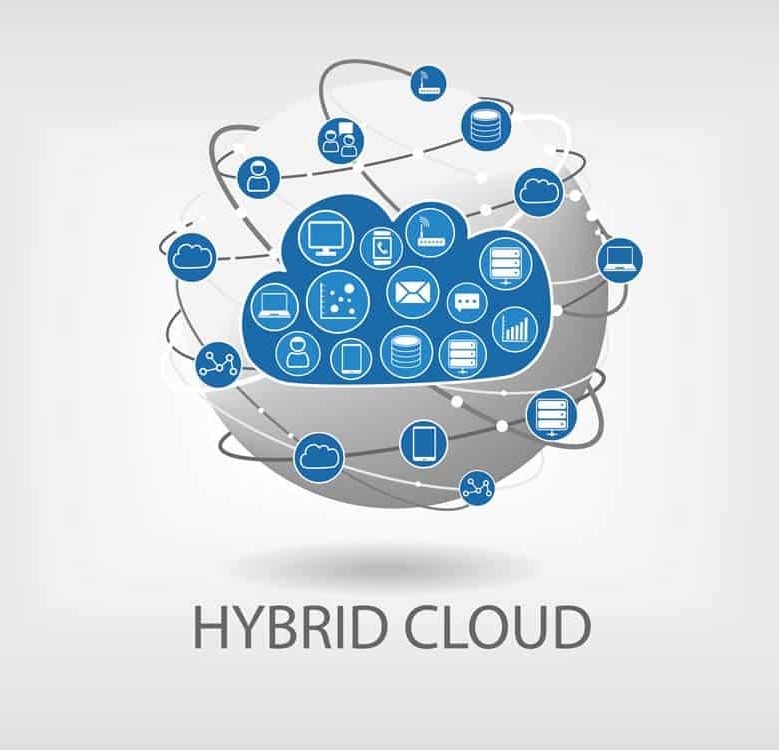NEWS: Navigating the Challenges of Hybrid Cloud Environments
July 27, 2023

Hybrid cloud environments, which combine both public and private cloud infrastructure, offer numerous benefits such as scalability, flexibility, and cost optimization. However, managing and navigating hybrid cloud environments also come with unique challenges. Let’s explore some common challenges faced by organizations in hybrid cloud environments and strategies to overcome them.
1. Data Security and Compliance
Ensuring data security and compliance across hybrid cloud environments is a top concern. Here’s how to address this challenge:
- Data Classification and Protection: Classify your data based on sensitivity and implement appropriate security controls, such as encryption, access controls, and data loss prevention measures.
- Identity and Access Management: Implement robust identity and access management solutions to manage user access, authentication, and authorization across both public and private clouds.
- Data Governance and Compliance Monitoring: Establish policies, procedures, and monitoring mechanisms to ensure compliance with industry regulations and internal governance requirements.
- Vendor Selection and Due Diligence: Perform due diligence when selecting cloud service providers, ensuring they meet stringent security and compliance standards.
2. Hybrid Cloud Integration and Interoperability
Integrating and maintaining interoperability between different cloud environments can be complex. Consider the following strategies:
- API and Middleware Integration: Leverage APIs and middleware solutions to enable seamless integration and data flow between public and private cloud environments.
- Orchestration and Automation: Implement orchestration tools and automation frameworks to streamline workflows, manage hybrid cloud resources, and ensure consistent deployment and management across environments.
- Standards and Interoperability Frameworks: Adopt industry standards and interoperability frameworks to promote compatibility and simplify integration between cloud platforms.
- Hybrid Cloud Management Platforms: Invest in hybrid cloud management platforms that provide a unified view and centralized control over your hybrid cloud resources.
3. Performance and Latency Optimization
Optimizing performance and minimizing latency across hybrid cloud environments can be a challenge. Consider the following approaches:
- Data Placement and Replication: Strategically place data and applications in the most appropriate cloud environment based on latency requirements, data sensitivity, and workload characteristics.
- Content Delivery Networks (CDNs): Utilize CDNs to cache and distribute content closer to end-users, reducing latency and improving performance for globally distributed applications.
- Application and Workload Optimization: Optimize applications and workloads for hybrid cloud environments, leveraging cloud-native technologies, scaling capabilities, and load balancing mechanisms.
- Network Bandwidth and Connectivity: Ensure sufficient network bandwidth and reliable connectivity between on-premises infrastructure and public cloud providers to minimize latency and maximize performance.
4. Cost Management and Optimization
Managing costs in hybrid cloud environments can be complex. Employ the following strategies:
- Cloud Cost Management Tools: Leverage cloud cost management tools to monitor and analyze spending across hybrid cloud environments, identify cost-saving opportunities, and optimize resource allocation.
- Reserved Instances and Spot Instances: Utilize reserved instances and spot instances in public clouds to reduce costs while maintaining performance and availability.
- Capacity Planning and Rightsizing: Continuously monitor resource utilization, rightsize your infrastructure, and optimize capacity planning to avoid overprovisioning or underutilization.
- Optimize Data Transfer Costs: Minimize data transfer costs between public and private clouds by leveraging efficient data transfer mechanisms, content caching, and data compression techniques.
Navigating the challenges of hybrid cloud environments requires careful planning, robust security measures, integration strategies, performance optimization, and cost management. By addressing these challenges proactively, organizations can fully leverage the benefits of hybrid cloud environments and achieve successful cloud adoption.
If you need assistance in managing your hybrid cloud environment, visit us at www.infradapt.com or call us at 484-546-2000. Our team of experts can help you navigate the challenges and design a hybrid cloud solution that aligns with your organization’s specific needs and goals.
